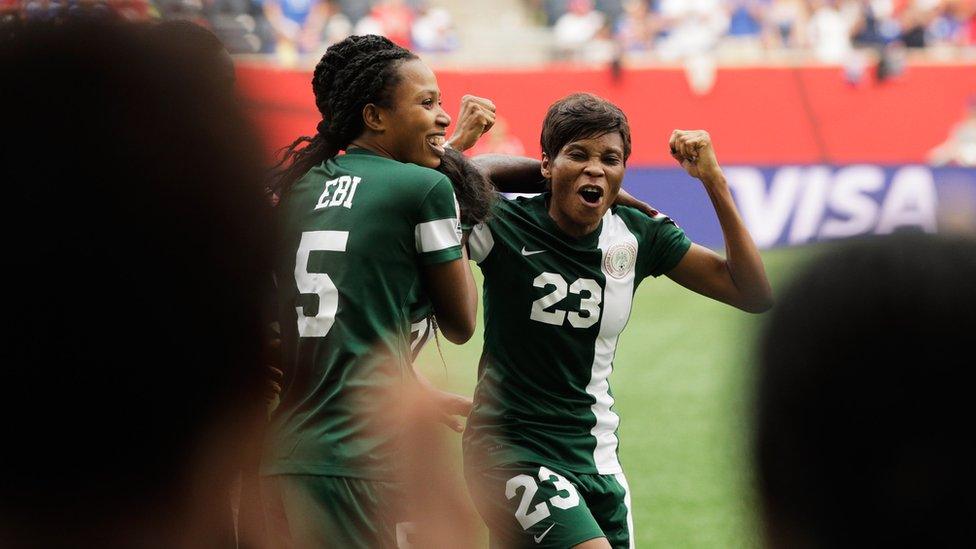South Africa captain Janine van Wyk's journey to the Women's World Cup
- Published
Janine van Wyk will lead South Africa out at the Women's World Cup for the first time.
Janine van Wyk will captain South Africa at it's first appearance at a Women's World Cup finals in France this month.
It is a far cry from her first taste of football in the early 1990s when she was forced to play in a boys' team as she started out with a local club Scaw Metals in Germiston, east of Johannesburg.
The 32-year-old describes how difficult it was for her to pursue her passion of playing football, the game played by her grandfather and uncles.
"At first it was really difficult to fit in. The boys wouldn't pass me the ball, they didn't accept me into the team so I was kind of isolated from everything," she explained.
"The reason I continued was the determination of wanting to do well. I knew I had it in me to be a good player. I wasn't weak, I could kick a ball and I just loved playing the game."
In addition to being a girl wanting to play what was very much a man's game in South Africa at the time, the young Van Wyk was also breaking a mould of Afrikaners being associated with rugby.
Township training
Her search for a girls' team took her to the unfamiliar surroundings of Spring Home Sweepers, a team based in Kwathema township also east of Johannesburg.
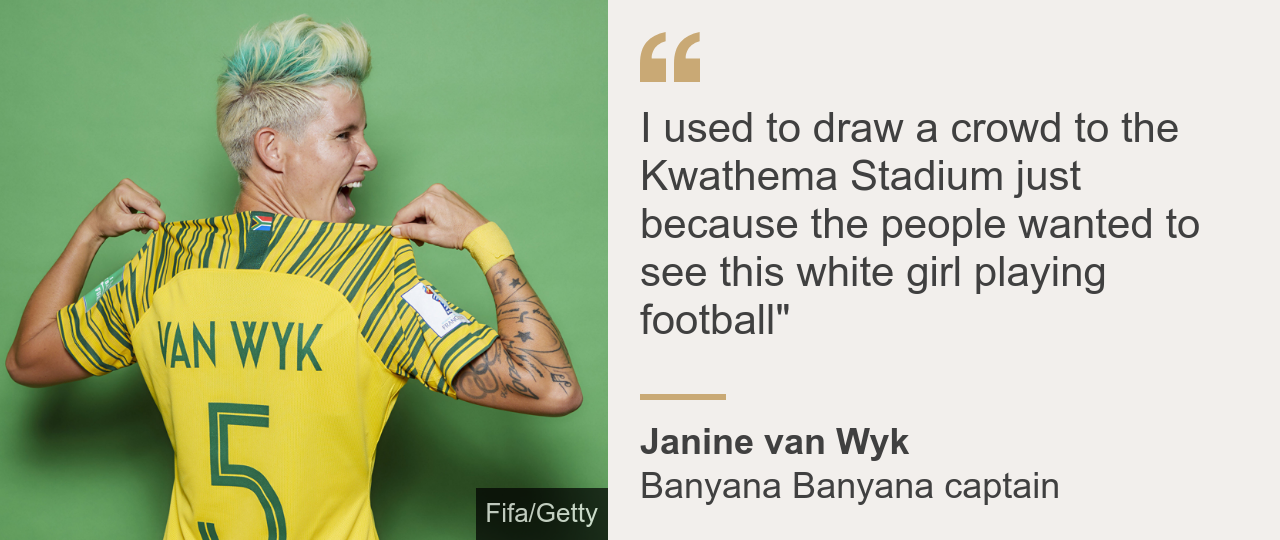
"It was a struggle to go into the township and train and play but again, after some time the people made me feel really welcome," she added.
"I used to draw a crowd to the Kwathema Stadium just because the people wanted to see this white girl playing football."
It wasn't until she received her first major awards - Player of the Year and Players' Player of the Year at Moroka Swallows - that the defender started to believe she had what it takes to make a career and a living out of the beautiful game.
"My dream, like many others alongside me, was to play for South Africa and I'm humbled by how far I have come," she said.
World Cup qualification
Having been to the previous two Olympic Games with Banyana Banyana, including as captain in 2016, Van Wyk chalked up a new career highlight when the team qualified for their first ever appearance at the World Cup.
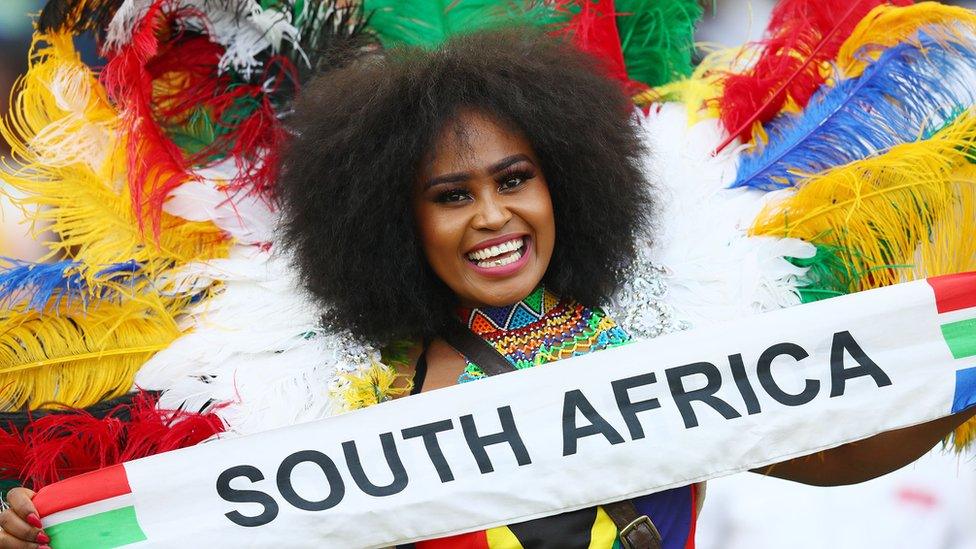
Banyana's good performance in recent year has translated into a bigger fan base
South Africa booked their tickets for France following a 2-0 victory over Mali in the semi-final of the Women's Africa Cup of Nations in December.
"I've been in the national team for 14 years and only after we qualified for the World Cup have I had people come up to me to chat or take pictures," she said.
"It's a sign of how much the game has grown and developed in our country. Now when I walk in a mall, every single person wants to take a selfie and have my autograph."
Among the many pieces of memorabilia, which includes the framed jerseys that commemorated her 100th and 150th international appearances as well as a picture with the late Nelson Mandela, is the silver medal she won at the Women's Nations Cup.
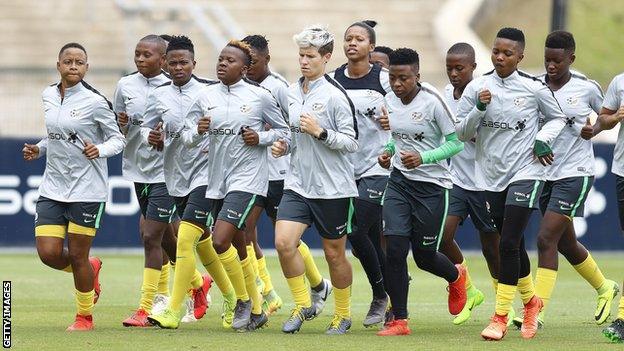
South Africa qualified for the Women's World Cup by reaching the final of the 2018 Women's Africa Cup of Nations in Ghana
"Looking at the medal it first reminds me of that final whistle that blew when we qualified for the World Cup by beating Mali at the Nations Cup," she explained.
"I remember falling to the ground, tears of joy were rolling down my face.
"It reminds me of all the struggles and the long journey that it has taken for us to achieve this dream.
"My ultimate dream was to qualify for and represent my country at the World Cup."
Bafana Bafana comparisons
South African Football Association (Safa) President Danny Jordaan agrees that Banyana's performances in recent years, capped by qualifying for the World Cup, has provided a major boost for the game in the country.
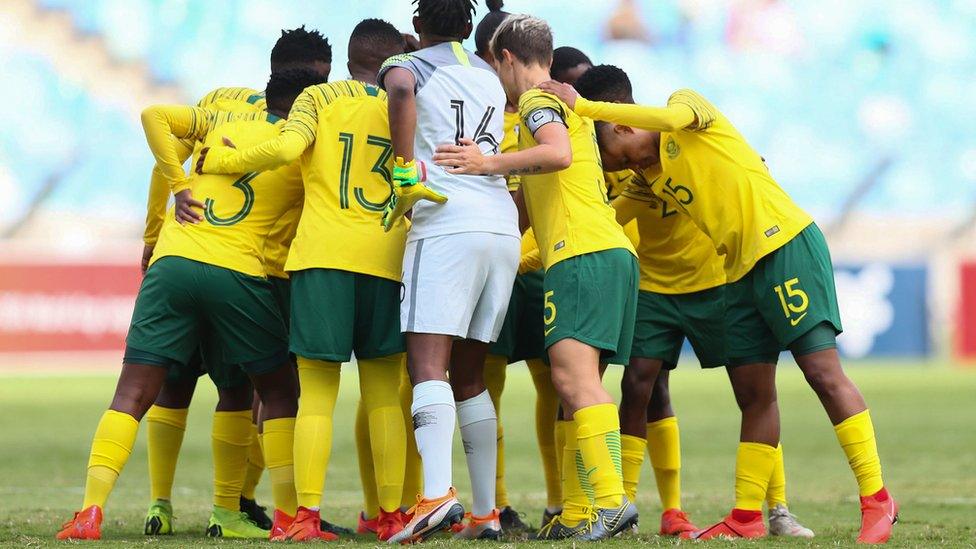
The rise in popularity of the women's national team coincides with the struggles of the men's side
"It's generating a belief in women's football. When you listen to people now talking about women's football they're even suggesting that this team is better than Bafana Bafana!" he said.
"Of course that's not real but you can see how it has transformed people's idea of women's football. Banyana have made people realise they are there to participate against the best in the world.
"Three years ago we had less than 200,000 women playing the game - we now have 456,000 women footballers, so there's an explosion of women coming to play the game.
"The performance of Banyana is going to accelerate the growth. We're hoping to have a million women footballers and our players are among the most skilful in the world."
Banyana's rise has coincided with the struggles of Bafana Bafana, the national men's team who were once ranked at number 16 in the world after winning the Africa Cup of Nations in 1996.
They failed to qualify for three of the last six Nations Cup tournaments as well as missing out on World Cup qualification (besides hosting in 2010) since 2002.
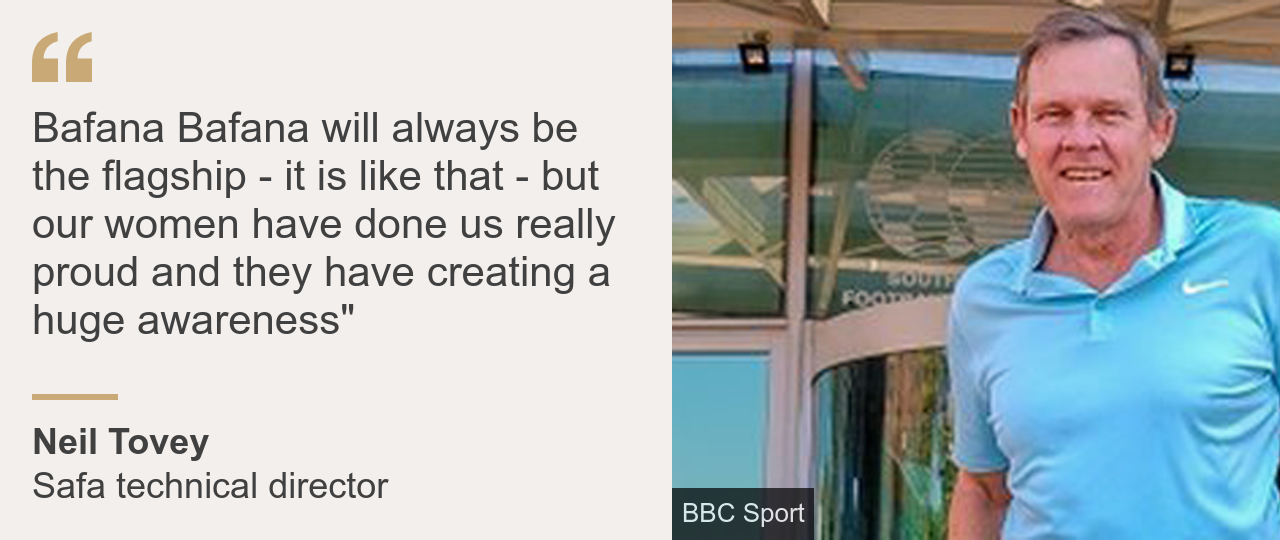
Neil Tovey, captain of the victorious 1996 team and now Safa Technical Director believes complacency may have played a role in Bafana's decline.
"When you think you've done it you don't put measures in place to maintain that standard of play," he explained.
"We kind of took it for granted that there will be that natural progression for the team to keep qualifying and keep progressing like they have."
But despite Banyana's rise and popularity in South Africa Tovey says the men's national team remains the flag-bearer of the nation's football.
"Bafana Bafana will always be the flagship - it is like that - but our women have done us really proud and they have creating a huge awareness," he said.
"There's no comparison between the two - they should live side by side and gain momentum from one another. If we have a qualifying Banyana and a successful Bafana Bafana we're going to be a happy nation.
Van Wyk agrees: "Now that Banyana is stepping up and qualifying for big tournaments like the World Cup and Olympic Games people start comparing the two and I think it's really unfair because I feel that Bafana have a tough task to qualify for the Africa Cup of Nations.
"They are currently in a building phase and we need to respect that."
- Published1 December 2018
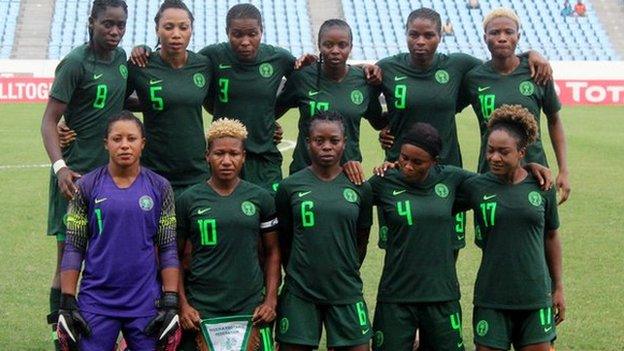
- Published27 November 2018
